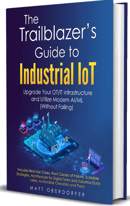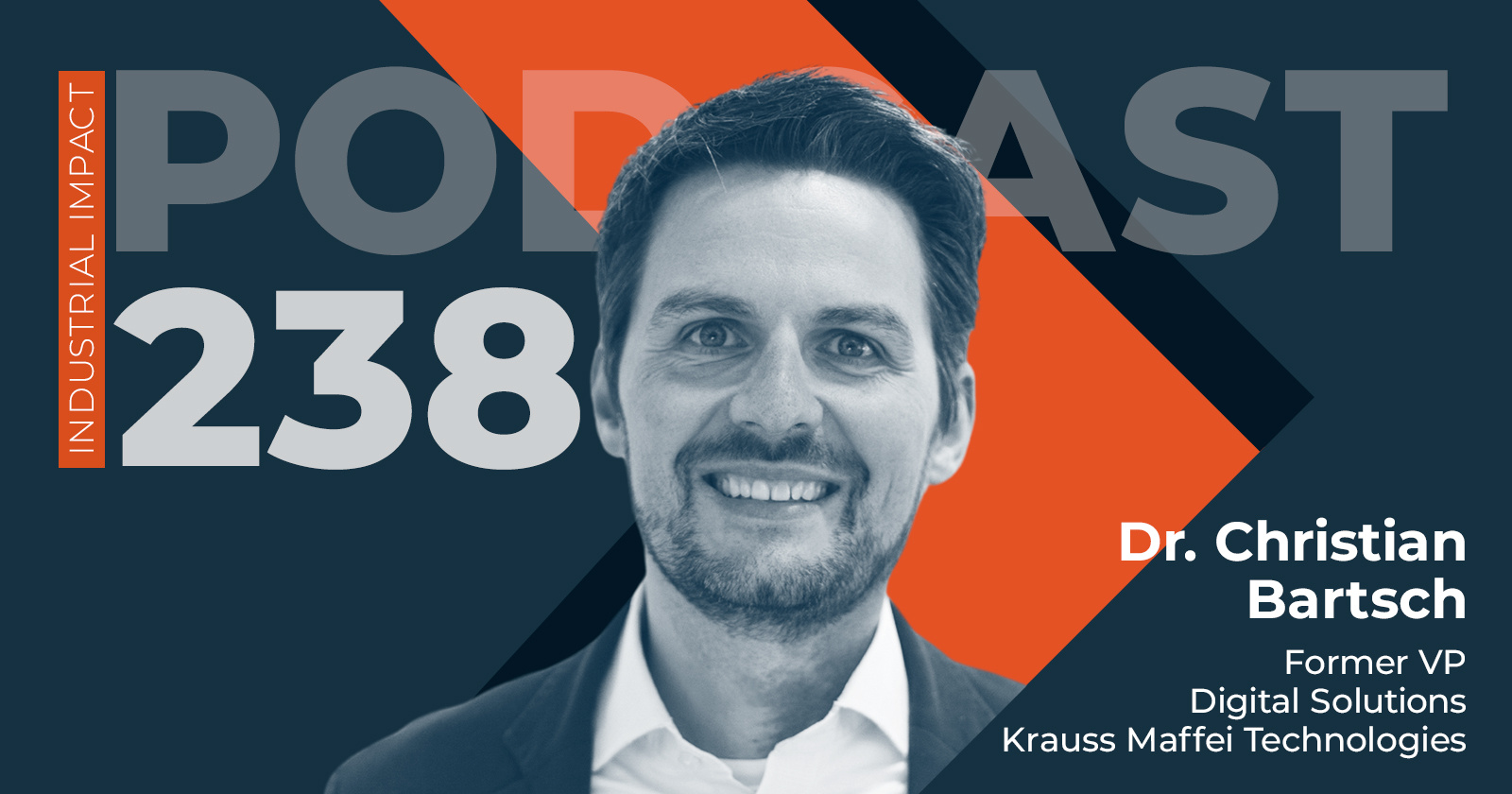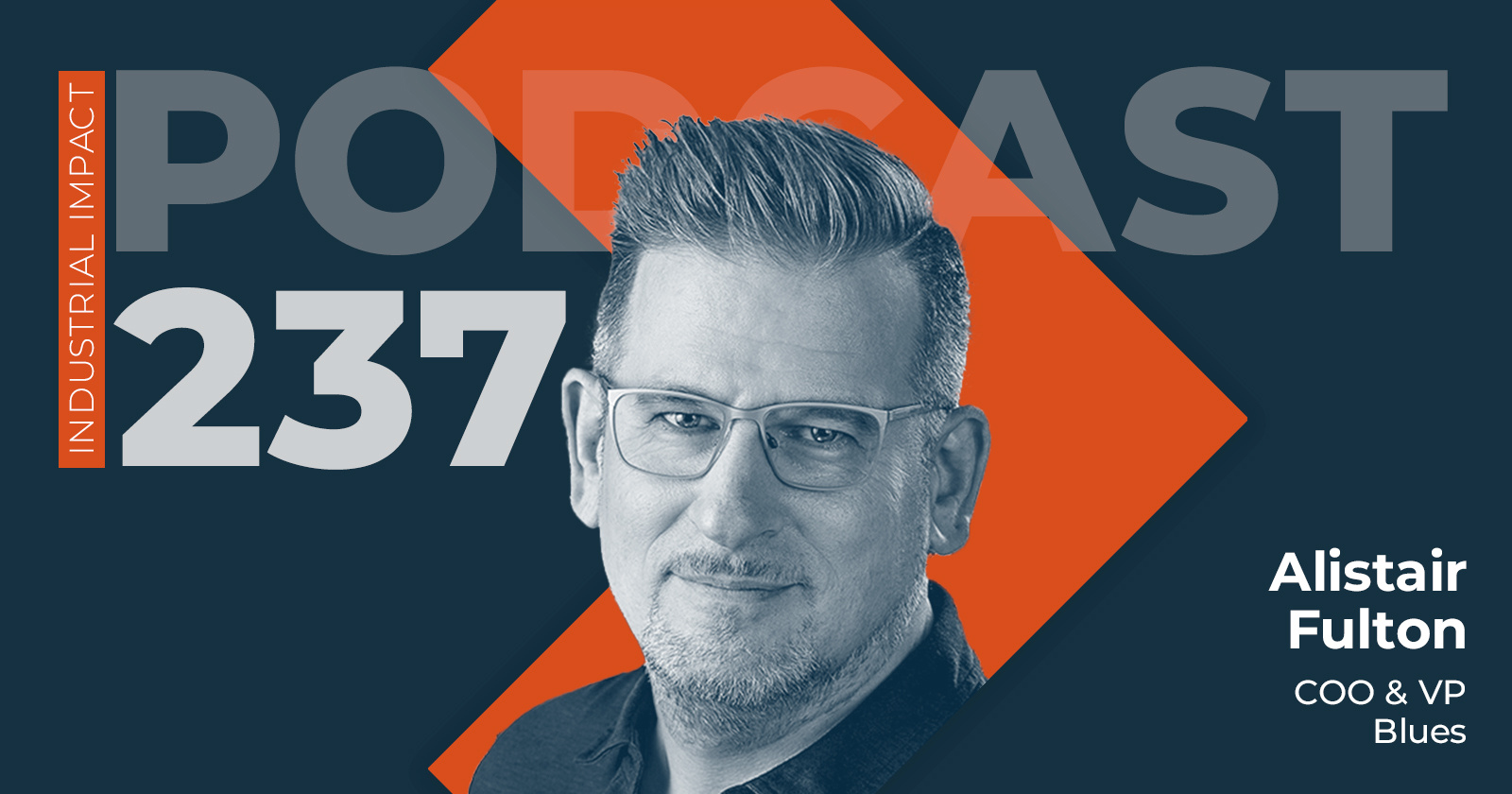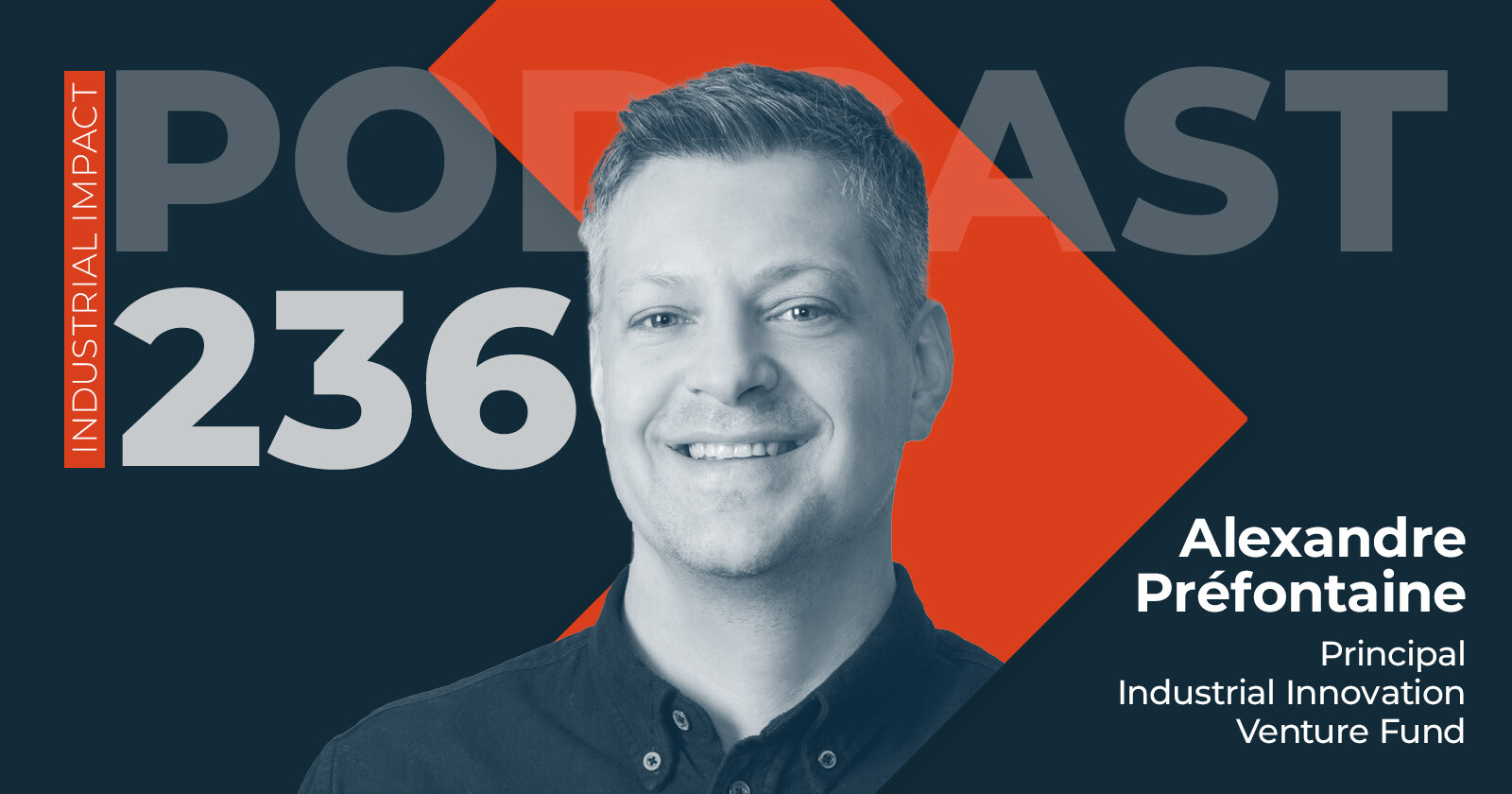Matt Oberdorfer
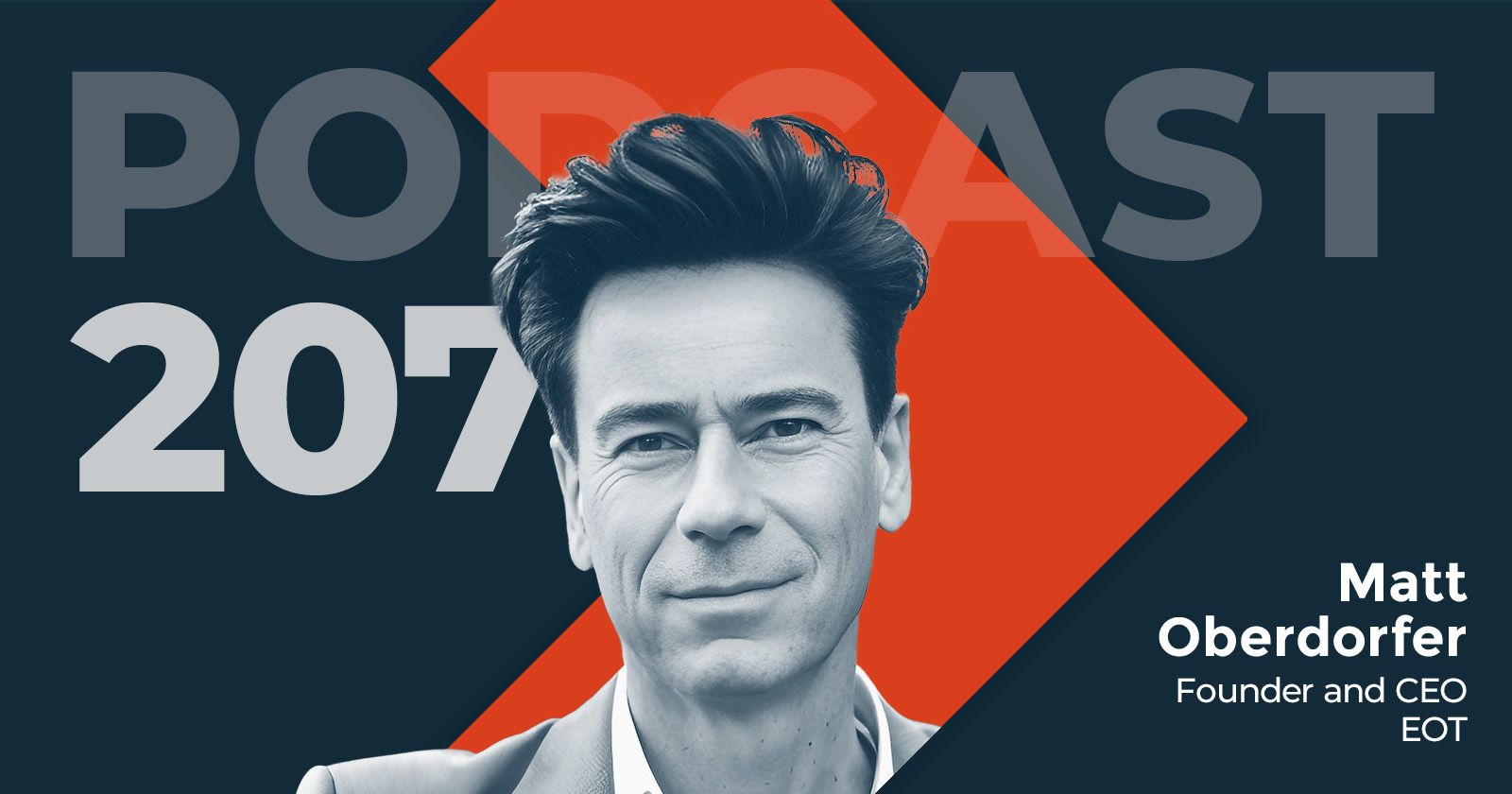
TRANSCRIPT
Ken: Good day, and welcome to episode 207 of our Momenta Digital Thread podcast series. Today, I am delighted to have Matt Oberdorfer as our guest. Matt is the founder and CEO of Embassy of Things, also known as EoT, a prominent software company dedicated to empowering industrial enterprises in their journey towards modernization and the development of operational Cloud historian industrial digital twins, or industrial data lakes. With a track record of founding and advising over 15 companies, some of which have received prestigious awards such as the Innovation Quotient Award for Information Technology, the annual eWEEK Excellence Award, and the Red Herring 100 North America Award, Matt is a serial entrepreneur and investor. In addition to his entrepreneurial pursuits, Matt is an accomplished speaker and author, having written five books to date. His upcoming book, "The Trailblazer's Guide to Industrial IoT," serves as a comprehensive resource for leaders in the energy and manufacturing sectors, offering valuable insights and practical guidance on upgrading the OT/IT infrastructure of industrial companies to leverage the capabilities of modern artificial intelligence, machine learning, and analytics. Matt's areas of passion encompass entrepreneurship, early-stage venture capital, grassroots marketing, lateral thinking, and the application of AI and ML, explicitly focusing on ensuring the sustainability of industrial enterprises. Matt, we warmly welcome you as our guest on the Digital Thread podcast.
[00:02:01]
Matt: Thanks, Ken. I'm excited to be on the show.
[00:02:03]
Ken: We're excited to have you. It's interesting; as we were doing the pre-briefing, we were commenting that we both played in the same space for quite a while and never had our paths crossed directly. I'm glad we finally got to do so on this podcast. We call this the Digital Thread podcast, so the key question is, what would you consider your digital thread? In other words, the one or more thematic threads that define your digital industry journey?
[00:02:31]
Matt: From my perspective, I began my journey as an entrepreneur at a young age. I founded The first company when I was 17, still living with my parents. It was a time when the world was still operating on Microsoft DOS, and Windows was starting to emerge. During that time, I noticed that many programs were written in BASIC, a programming language that has since been forgotten, while the world was moving towards C.
That's when I had the idea of creating a trusted compiler that could automatically translate code written in BASIC into C. This way, developers could write their code once and have a complete code base that could be quickly developed. It allowed for the transition from DOS applications to Windows applications. This marked the beginning of my entrepreneurial journey, and I promptly began learning valuable lessons.
One of the lessons I learned was the concern my mom expressed when she noticed daily checks arriving in our mailbox. She wondered where the money was coming from and what I was doing. I also realized the importance of providing support when a software company specializing in software for doctors to handle prescriptions and analyses contacted me. They were experiencing issues with the cross-compilation process from BASIC to C and wanted to visit my support center. Little did they know that my support center was my bedroom in my parents' house. It was a fascinating time for me to dive into entrepreneurship.
Throughout my journey, I gained extensive knowledge about what it takes to be an entrepreneur. The digital world's mechanisms, advancements, and innovations always captivated me. The abundance of opportunities constantly fueled my inspiration and imagination.
Back then, I resided in Germany, but now I find myself living in the United States. My journey from that point to where I stand today encompassed pivotal experiences and developmental stages. One of these occurred after initiating my first CNL-type home startup. Subsequently, I joined Hewlett Packard, and I highly recommend that every entrepreneur works for a large corporation at some point in life. The learning opportunities provided by such an experience surpass those offered by any MBA program. Immersing oneself in a vast organization exposes you to intricate social and political dynamics. It provides invaluable insights into what matters to the organization and the outside world while maintaining a broader perspective.
I was tasked with launching an internal startup within Hewlett Packard, the company for which I am immensely grateful as it facilitated my move to the United States. It was an exciting endeavor to create a startup within a large company. Around 2002-2001, my focus was on an emerging concept called Utility Computing. The idea centered around building clusters that could be used to rent computing power and storage over the internet, with the potential to become a groundbreaking application. We pursued this venture within Hewlett Packard, envisioning a future where each new computer could function like a printer cartridge. Much like how Hewlett-Packard generated recurring revenue by selling printer cartridges and ink alongside their printers, we sought to capitalize on a similar razor and razor blade principle. Our efforts garnered recognition, with features in numerous magazines and presentations at shareholder meetings. This experience proved crucial to my growth within the digital landscape, as it allowed me to embrace the role of a global entrepreneur.
Our first system sale took place in Singapore, where we secured a deal with a communications company. This necessitated my physical presence in Singapore to facilitate the sale. Despite being associated with a large corporation like Hewlett-Packard, the sales team primarily focused on selling printers, computers, workstations, and servers. It was an incredible experience working within a big company. Entrepreneurship has always intertwined with every aspect of my life, weaving through my journey.
[00:07:09]
Ken: That's quite clear. I wasn't aware of the origin story behind your entrepreneurship, and it's truly remarkable. You have become well-known for your later entrepreneurial ventures, particularly for founding and successfully scaling multiple startups, particularly in what we now refer to as the OT (Operational Technology) space. I'm curious to know what valuable lessons you have learned throughout your journey of founding, scaling, and exiting startups, especially in the deep tech sector.
[00:07:34]
Matt: There are two key messages I'd like to convey. Firstly, for founders venturing into the deep tech space, it's crucial to identify the problem worth solving and focus on it. Deep tech differs significantly from starting a social networking platform or consumer app. The question is: What problem in the deep tech realm deserves attention? On the other hand, when raising funds, it's essential to understand what to do, what to avoid, and what to prioritize. In my personal experience, during my college years studying computer science, I dreamt of being in Silicon Valley, starting my own startup, and raising millions of dollars. Eventually, that day came, and I found myself at Sand Hill Road. Our first office was on the ground floor of a billion-dollar venture fund. Every morning, I drove up Sand Hill Road, where I hired my first VP of Engineering and began my journey. Our company focused on high-performance computing, utilizing clusters of cost-effective pizza box supercomputers with high CPU and memory capabilities. This concept of building supercomputers out of clusters is now commonplace, but at the time, companies like Convex, Cray, and Silicon Graphics dominated the market. I even approached the CEO of Silicon Graphics with the idea of collaboration, but my proposal still needed a warm reception. However, our company went on to serve big movie studios for rendering purposes, including notable films like "Finding Nemo" and the CGI for the first Spider-Man movie. Our office on Willow Road showcased movie posters created using our computers.
The high-performance computing technology we developed also found applications in the oil and gas industry and Wall Street. I spent significant time engaging with oil and gas companies in New York and Texas. The key message here is that if you identify a trend, such as computing or AI, it's crucial to focus on an overlooked problem rather than entering an overcrowded market. For instance, instead of developing another ChatGPT-like application, consider addressing a support function, infrastructure, access, or REST API that caters to a broader audience. This approach leverages the trend while solving a significant problem.
As a founder, I recommend pursuing this path. When raising funds, it's important to approach funds whose sizes align with your desired exit strategy. This is my personal motto. If you raise money from a billion-dollar fund, you must consider the potential for a billion-dollar exit. Otherwise, as a founder, you may see a small return. Venture funds aim to generate returns based on their fund sizes. If your exit goal is $20 million or you'd be content with a $50 million acquisition, seek out a fund of a similar size. But always consider your exit strategy, the amount you want to raise, and the most probable outcome for your company. If you're not aiming for unicorn status and have a smaller focus, find a fund that aligns with that vision.
Secondly, when raising your first round, particularly the Series A (excluding seed rounds), aim to secure as much funding as possible. This is because, as an entrepreneur, you are in the best position at that stage. Although your revenue may be insignificant, the promise and potential are high, and this stage sets the foundation for subsequent rounds. Typically, investors will acquire 20 to 25% of your company, regardless of the amount you raise in the first round. This is done to allow room for future Series B and Series C rounds.
[00:13:19]
Ken: Great feedback. We frequently advise startups to prioritize their exit strategy and adopt a backward-thinking approach, considering factors such as the amount raised in each round, the number of rounds, and the optics of the round profile. This advice holds significant importance. Now, let's delve into your most recent startup, the Embassy of Things (EoT), which you established in 2018. Could you share the origin story and value proposition behind EoT?
[00:13:46]
Matt: For EoT, the origin story revolves around my previous involvement in startups, particularly those in the industrial sector, emphasizing analytics, big data analytics, and AI. Here's a typical scenario for office startup founders: Imagine having a remarkable AI solution that can enhance wind turbines, power plants, oil and gas wells, and more. You approach a large company, pitching the idea of predictive maintenance, failure prediction, or production optimization. The initial proof of concept (POC) is successful, but you encounter a frustrating predicament known as "POC purgatory" or "POC hell."
This purgatory arises from the company's demand for data. They insist on obtaining data from their plants, power plants, nuclear plants, and operational systems. However, the operational organization within these big companies operates under tight security measures, remaining isolated from the internet and inaccessible. When the startup manages to acquire some data through thumb drives or FTP, they train their machine learning models and return to the company with exciting results—such as a 5% reduction in maintenance costs. The executive sponsor shares this success story with the CEO, who is enthusiastic about implementing the solution. But then, the operational organization and the customer make it clear that no one is allowed to touch their systems or access their operational data sources. They dismiss the startup, stating that it was made clear from the beginning.
This challenge stems from the OT/IT divide—the separation between the operators responsible for generating revenue and managing assets and the business and IT teams handling networks and infrastructure. Consequently, the critical issue becomes how to transfer data from the air-gapped OT operational data systems to the IT systems and the Cloud, where advanced analytics and AI can be applied. This challenge inspired the origin story of EoT. We recognize that everyone would appreciate it if we could build a company that solves this problem—enabling the secure extraction of operational data to the Cloud. Small and large analytics startups would benefit from access to data to showcase their capabilities. Cloud vendors would benefit from the influx of billions of data points daily.
Today, EoT fulfills this purpose by delivering billions of data values per day to the Cloud for some of our customers, fueling their consumption of Cloud services and generating tremendous Cloud revenues. We have become the plumbing system within the industry. Just as a new house appears shiny and attractive, AI companies may possess all the bells and whistles, but EoT serves as the plumbing infrastructure that ensures the flow of data. It's akin to providing water to a house so potential buyers can envision themselves living there, confident that everything works seamlessly. As a software company, we built EoT to be a pick-and-shuffle play, offering an industrial data fabric that enables the construction of industrial digital twins, data lakes, and Cloud historians. These building blocks provide the foundation for integrating AI and machine learning solutions. This idea stemmed from identifying an overlooked problem—companies' need for data—thus presenting a problem worth solving. Our focus is on the energy sector, encompassing renewables, oil and gas, mining, and manufacturing, as part of our strategic expansion. This is where EoT stands today.
[00:19:18]
Ken: Very helpful, actually. 'Industrial data fabric'; I like the ring of that. Tell us-
[00:19:23]
Matt: One thing, really quick? Go to industrialdatafabric.com. We own the domain.
[00:19:31]
Ken: There you go. You mentioned your grassroots marketing and lateral thinking before, so that's a good example of how you're bringing all that together. What have been some of your notable use cases and wins?
[00:19:44]
Matt: In terms of use cases and achievements, we observe three primary drivers as the biggest rivals in the industrial sector. The first driver revolves around classic production increase, aiming for higher revenues and cost-cutting, specifically focusing on operational expenses (OpEx). By minimizing operational expenses, companies can ultimately boost their profits. The second driver centers around operational efficiency, ensuring streamlined processes, optimized resource utilization, and reduced downtime. Lastly, the third driver is Net Zero carbon footprint reduction, which holds significant importance across all industries as sustainability becomes a priority.
One of our notable use cases aligns with bp, a global company, particularly their North American division, box, where our software has been in production since 2020. Over the past three years, data from SCADA systems and historians, such as AVEVA PI historian, which serves as the operational data backbone, has been seamlessly flowing into the Cloud. This is a public use case we collaborated on with AWS, and you can find more information by conducting a simple Google search. The use cases range from reporting, monitoring, and forecasting to prediction of production and operational activities. We cater to various types of data lakes and applications, facilitating the needs of both engineers and production engineers on the operational side and addressing the business side's requirements, such as production forecasting.
Regarding the software's capabilities and enabled use cases, we support over 400 different types, predominantly focusing on prediction and anomaly detection. This involves training machine learning models and big data analytics models. Our software transports operational data to the Cloud and performs data transformation and contextualization. As a data scientist, raw data from an OPC UA server may be useless; therefore, our software ensures the delivery of interpolated, standardized data over specific periods, enabling the reliable training of machine learning models. Moreover, our software acts as a connector, facilitating the creation of metadata hierarchies and enriching data with the necessary contextual information. This allows for leveraging an industrial data lake to train machine learning models and subsequently deploying these models at the Edge.
We recently unveiled Twin Talk, which establishes a connection between a digital twin and a physical twin, enabling communication and interaction. Furthermore, we announced Twin Talk GPT, a distinct offering from traditional large language models. Twin Talk GPT is a time series generative three-train transformer model that specializes in simulating floating point data. In essence, it empowers users to simulate entire industrial systems, including oil wells, through appropriate training. As I mentioned, our software facilitates data transportation, transformation, and machine learning model training, making it instrumental in simulating predictive maintenance events.
This thread encompasses our origin story and showcases the various use cases we address in our current operations.
[00:23:53]
Ken: Excellent. Wow, you have been incredibly productive. Not only have you founded and scaled startups, but you have also managed to write five books. As mentioned earlier, your upcoming book is titled "The Trailblazer's Guide to Industrial IoT." Please share what inspired you to write this book and what key themes you explore within its pages.
[00:24:11]
Matt: "The Trailblazer's Guide to Industrial IoT" is the culmination of my experiences over the past four years. It differs from your typical industrial IoT book, which provides technical information about protocols. Instead, it takes the form of a novel, a fable. The book primarily tells the story of a trailblazer, an individual within an industrial company who dares to envision a world beyond the limitations of the present. This trailblazer strives for digital transformation and yearns to make a difference.
The protagonist challenges the status quo, understanding the potential of what their company could become and possessing the determination to make it happen. Trailblazer is not merely a dreamer; they are the architects of change. They can translate their vision into actionable plans, develop processes and systems, and rally others to achieve success. They are entrepreneurs within a large organization.
"The Trailblazer's Guide to Industrial IoT" is a novel that begins with the trailblazer receiving a thought-provoking message within their corporate office, prompting them to consider the necessity of AI, industrial IoT, and other technologies in achieving goals such as Net Zero, production increase, and cost-cutting. The trailblazer and their team embark on a journey, navigating the challenges inherent in a large corporation to deliver and implement a solution focused on enhancing production and monitoring.
Returning to your question, the aim of writing this book was to provide readers with insights into AI and industrial IoT in an entertaining format. It also addresses the common reasons behind the failure or fizzling out of digital transformation and digital twin projects. Many such initiatives start with great momentum but fail to deliver tangible results. This book explores how to avoid the pitfalls and landmines that often arise beyond the realm of technology and AI. It offers lessons on leveraging AI to achieve corporate key performance indicators and success factors while captivating readers with an engaging story.
[00:27:39]
Ken: Sounds like a timely and relevant book. When do you expect it to be published?
[00:27:44]
Matt: "The Trailblazer's Guide to Industrial IoT" will be available on Amazon in mid-June. Additionally, my marketing team is currently working on a website, which will be called trailblazersguide.com or something similar. The website will provide further information about the book.
[00:27:58]
Ken: We will include a link for that "Trailblazer" site when we publish the webcast. In closing, I always like to ask; where do you find your inspiration?
[00:28:09]
Matt: For me, my number one inspiration comes from my family, particularly my three kids, and the experience of living in this digital world. We are living in an exceptionally exciting era where we have the power to make significant changes and impact the world in ways we never could before. Currently, I'm in Houston, Texas, where I'm attending Energy Day, an event organized by AWS that focuses on oil and gas and renewable energies. The energy and enthusiasm surrounding the possibilities and achievements we can witness today inspire and drive me.
[00:28:50]
Ken: I wholeheartedly agree with you. You have consistently been at the forefront of disruptive change throughout your professional life. It's fascinating to see how quickly and significantly the energy transition, especially in Germany, your home country, is bringing about transformative changes. The pace of development in this field is truly remarkable. Thank you, Matt, for taking the time to share your valuable insights with us today.
[00:29:17]
Matt: Thank you so much, Ken. It was great to talk to you; happy to be on your show.
[00:29:22]
Ken: Yeah, I'm thrilled to have the opportunity to talk with you finally. You have many exciting ventures underway. I'm eagerly looking forward to reading your book upon its release and delving deeper into the remarkable work at the Embassy of Things. It has been a pleasure to have Matt Oberdorfer, founder, and CEO of EoT, Embassy of Things, and a renowned writer and speaker, share his insights with us. Thank you for tuning in, and we invite you to join us for the next episode of our Digital Thread podcast series. We hope you have a remarkable day. You've been listening to the Momenta Digital Thread podcast series. We hope you've enjoyed the conversation, and as always, we value your feedback and suggestions. Be sure to visit our website at momenta.one for archived episodes and resources to support your digital transformation journey. Thank you for listening.
[The End]
Connect with Matt Oberdorfer
What inspires me?
Matt's inspiration stems from his family and the transformative potential of the digital age. He believes in the ability to create meaningful changes and contribute positively to the world. Beyond business and technology, Matt is driven by his passion for entrepreneurship, early-stage venture capital, grassroots marketing, lateral thinking, and utilizing AI and ML for sustainable industrial endeavors. His diverse interests and experiences shape his distinctive perspective and innovative approach to driving progress in the business world.
About EOT
The Embassy of Things (EOT) is a prominent software company founded in 2018. It specializes in empowering industrial enterprises through advanced technologies, focusing on operational cloud historians, industrial digital twins, and industrial data lakes. EOT enables companies to optimize operations, make smarter decisions, and drive digital transformation. With a strong track record of successful use cases, EOT delivers innovative solutions that integrate seamlessly with existing industrial systems. Its industrial IoT and data-driven technologies expertise help clients achieve improved asset performance, predictive maintenance, and enhanced operational visibility. Overall, EOT is dedicated to driving digital transformation in industries through cutting-edge software solutions.

